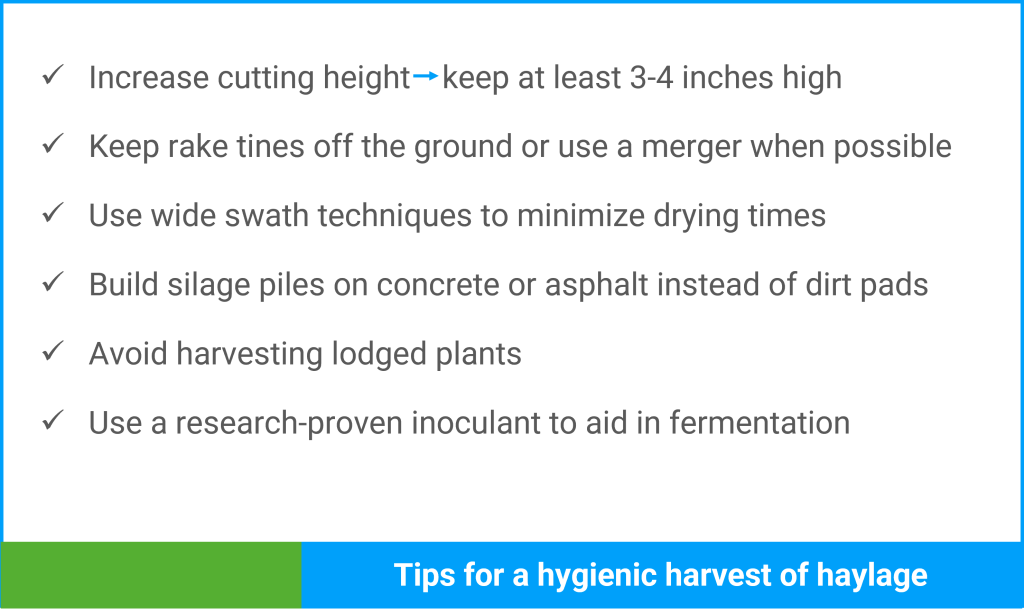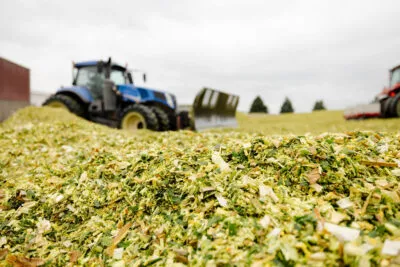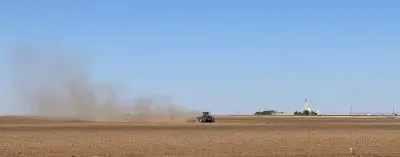Haylage: Difficult, But Worth it
Haylage can be the most difficult crop to harvest and ensile properly. Being prepared to face the challenges will ensure a high-quality, hygienic feed is delivered to your cows.

Benefits of harvesting and feeding haylage
Alfalfa and grass haylages can provide a high-protein forage to dairy and beef cows. Reducing costs is more important than ever to keep a farm running, and utilizing a high-quality, high-protein haylage can help farmers reduce other feed input costs. Adding a high-quality protein source from a forage can reduce the amount of protein concentrates that need to be bought. Protein concentrates, like other feed inputs, are very expensive and with the price of feed and all inputs on the farm increasing, growing haylage and saving money on feed costs is the way to go.

Challenges in harvesting/ensiling haylage
- Plant characteristics and environmental conditions are the biggest challenges when working with haylage.
Due to high protein content and mineral levels found in haylages, they have a higher buffering capacity. This means it is more difficult to rapidly drop the pH at the start of ensiling and to reach a low final pH. The consequences of not achieving rapid or extensive acidification can be detrimental to fermentation. - Unwanted microorganisms and proteolytic enzymes that can break down valuable nutrients and create undesirable end products are not inhibited. A high-quality forage from the field can be quickly turned into a low-quality or even spoiled forage.
- Soil contamination during harvest is also a big concern.
Unlike other types of silage, haylages need to be wilted before harvesting and ensiling. Whole-plant haylages at the time of cutting have very high moisture contents that make fermentation difficult. - Low DM conditions are more susceptible to clostridial fermentation and an excess loss of nutrients from seepage in the silo. To reduce these possibilities, the forage is mowed and laid out on the ground to wilt or dry out to a proper dry matter for fermentation.
- During this wilting process, soil contamination risks are high. Soil contamination may lead to clostridial spore contamination along with the addition of added ash.
Clostridial contamination can lead to butyric acid production during fermentation leading to decreased intake and other cow health issues. - Additional ash content will further inhibit rapid acidification and make it more difficult to achieve an overall proper fermentation.
Figure 1. Ash levels for different haylages are summarized from in-field data (2021). Ideally, the goal is to keep ash levels below 10% (red line) but samples from across the US show that this goal is often not met.
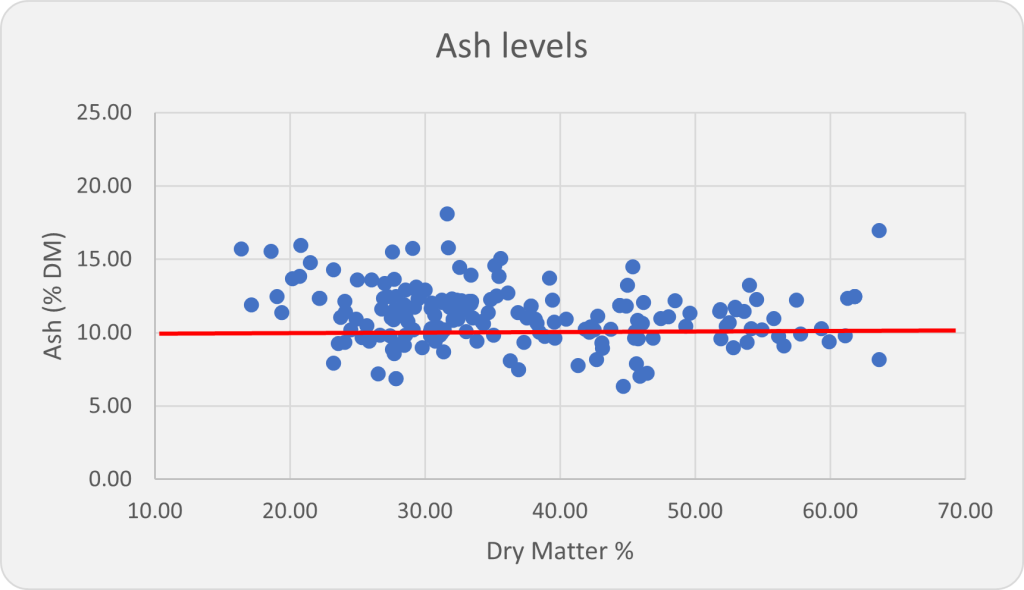
Source: Provita US Field Data, 2021
How wilting time influences yeast counts
Weather conditions during harvest can also pose more challenges in ensiling haylages. In many parts of the country, wilting conditions can be during times of the year with wet weather. Planning when to mow and wilt can be difficult when rain is in the forecast. Ideally, the forage should be mowed and wilted to the proper DM within 24 hours and ready to be chopped and packed into the silo. Keeping the wilting process short and sweet means that there is the highest retention of valuable nutrients. During wilting the plant is respiring and using up sugars within the plant. Sugars are highly digestible and therefore highly desirable to preserve in the silage. Rapidly wilting and reaching the proper DM for fermentation means these nutrients are conserved and available for fermentation and consumption by the cow. Not only are there losses in valuable nutrients but as the wilting process is extended, yeasts and other undesirable microorganisms are increasing, further jeopardizing a quality fermentation.
Figure 2. Influence of wilting time on yeast count of different forages. As wilting time increases yeast loads increase.
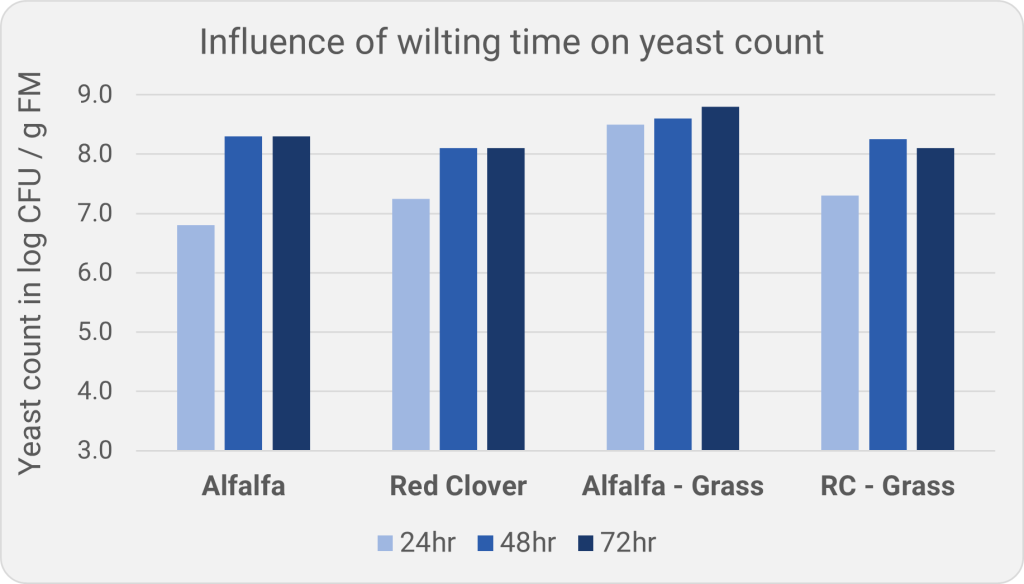
Source: Dr. Weiß, HU Berlin, 2015
Tips for a hygienic harvest of haylage
Some of the challenges faced with haylages, like plant characteristics and weather conditions, are inevitable or out of our control. Ideally, the forage would be harvested during a period of dry weather, however, there is a small window of time when plant maturity and quality are optimal. Waiting for dry weather could mean losing quality with increased fiber and lower protein and energy densities. The balance of plant maturity and optimal weather conditions can be hard to navigate. Unfortunately, we cannot control these issues, but we certainly can take steps to harvest the most hygienic and quality feed given the circumstances.
